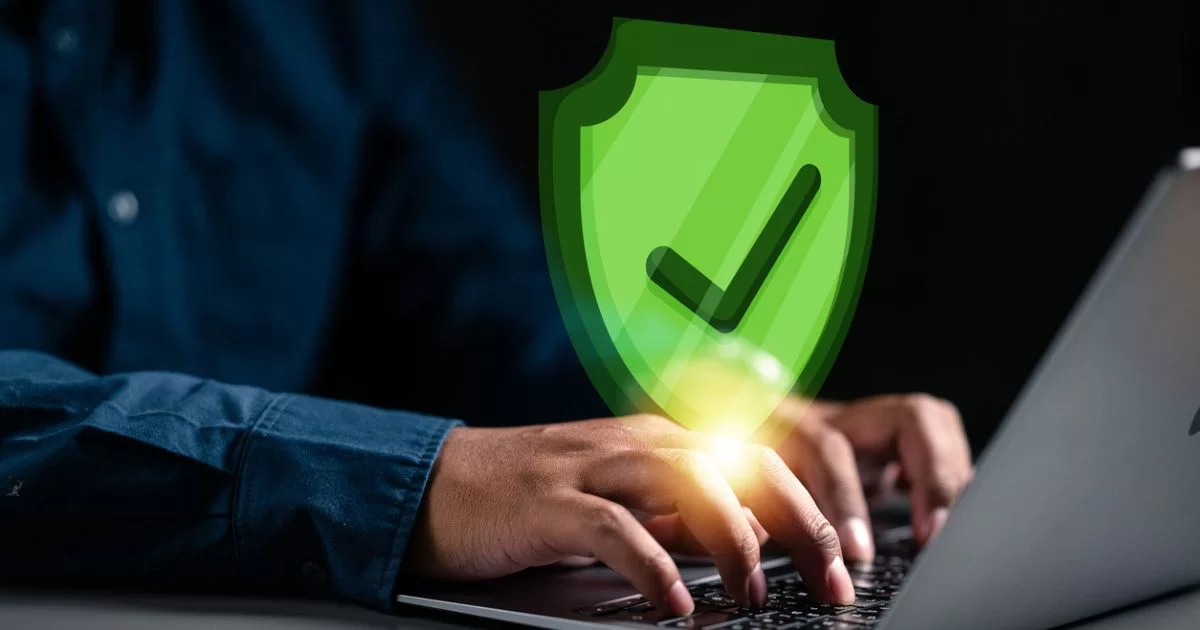
| November 21st, 2023 |
eCheck Verification — Safeguarding Transactions with Advanced Security Measures!
In the fast-paced realm of digital finance, ensuring the security of transactions is paramount. With the rise of electronic payments, eCheck verification has become a cornerstone in safeguarding financial transactions. In this blog post, we’ll delve into the intricacies of eCheck verification, shedding light on how advanced security measures are shaping the landscape of digital payments.
The Evolution of eCheck Verification:
Electronic checks, or eChecks, have transformed traditional check payments into a more convenient and efficient digital format. Just like their paper counterparts, eChecks rely on the same fundamental principles but with added layers of security. In essence, eCheck verification is the process of confirming the authenticity of an electronic check before completing a transaction.
Key Security Features in eCheck Verification:
1. Encryption and Secure Transmission:
Security begins with data protection. eCheck verification employs robust encryption protocols to secure the transmission of sensitive information. This ensures that the details of the electronic check, including account numbers and transaction amounts, are shielded from unauthorized access during the verification process.
2. Multi-Factor Authentication:
Enhancing security measures, eCheck verification often incorporates multi-factor authentication. This involves the use of multiple layers of identity confirmation, such as passwords, PINs, and biometric data. Multi-factor authentication adds an extra level of defense against unauthorized access and ensures that only legitimate parties can initiate and validate eCheck transactions.
3. Real-time Fraud Detection:
eCheck verification systems are equipped with real-time fraud detection capabilities. Advanced algorithms analyze transaction patterns and identify irregularities that may indicate fraudulent activity. This proactive approach allows for immediate intervention to prevent unauthorized transactions, providing an additional layer of security for both businesses and consumers.
4. Compliance with Regulatory Standards:
Adherence to regulatory standards is crucial in the financial sector. eCheck verification systems are designed to comply with industry regulations and data protection laws. This not only ensures the legality of electronic transactions but also instills confidence in users by demonstrating a commitment to ethical and secure business practices.
Overcoming Challenges in eCheck Verification:
While eCheck verification offers enhanced security, challenges persist. Addressing these challenges is essential to maintain the integrity of the digital payment ecosystem.
1. Privacy Concerns:
As with any digital transaction, privacy is a concern. Striking the right balance between the convenience of electronic payments and safeguarding user information remains a challenge. Innovations in anonymization techniques and data protection protocols are continually being explored to mitigate these concerns.
2. Constant Adaptation to Emerging Threats:
The digital landscape is dynamic, and so are the tactics employed by cybercriminals. eCheck verification systems must stay ahead of emerging threats by adopting adaptive security measures. Regular updates and patches are essential to fortify defenses against evolving cybersecurity risks.
3. Cross-Border Compliance:
In an interconnected global economy, eCheck transactions often involve cross-border payment. Navigating the diverse regulatory frameworks and compliance requirements of different countries presents a challenge. eCheck verification systems must evolve to ensure seamless compliance with international standards, addressing issues such as varying data protection laws and currency regulations.
4. User Education and Awareness:
A critical challenge in eCheck verification lies in user education and awareness. Many users may not fully understand the intricacies of electronic transactions and the security measures in place. Establishing comprehensive educational programs to inform users about the importance of secure practices, recognizing phishing attempts, and understanding eCheck verification processes can significantly contribute to a safer digital payment environment.
5. Scalability for Increasing Transaction Volumes:
As the adoption of eCheck Payment continues to grow, scalability becomes a pressing concern. eCheck verification systems need to handle increasing transaction volumes without compromising on speed and efficiency. Scalability challenges can arise in processing large batches of transactions simultaneously, requiring robust infrastructure and optimized algorithms to maintain the integrity of the verification process.
6. Collaboration and Information Sharing:
In the fight against cyber threats, collaboration among industry stakeholders is paramount. Sharing information about emerging threats, attack vectors, and best practices can enhance the collective ability to combat cybercriminal activities. Establishing platforms for collaboration between financial institutions, cybersecurity experts, and regulatory bodies is essential to create a united front against evolving challenges in eCheck verification.
7. Ethical Use of Data:
While the focus is often on the technical aspects of security, the ethical use of data is an equally crucial challenge. eCheck verification systems must ensure that the data collected during the verification process is used responsibly and in accordance with privacy laws. Establishing transparent data usage policies and obtaining explicit consent from users contribute to building trust and mitigating concerns related to the ethical use of personal information.
8. Integration with Legacy Systems:
Many businesses still operate with legacy systems that may not be seamlessly compatible with modern eCheck verification technologies. Overcoming the challenge of integrating advanced security measures with existing infrastructure requires careful planning and investment. Transitioning from legacy systems to more secure and efficient eCheck verification solutions may involve overcoming resistance to change and addressing compatibility issues.
The Future of eCheck Verification:
Looking ahead, the future of eCheck verification holds promise for even more sophisticated security measures.
1. Blockchain Integration:
Blockchain technology is increasingly being explored to enhance the security of eCheck transactions. The decentralized and immutable nature of blockchain adds an extra layer of trust and transparency to the verification process, reducing the risk of fraud.
2. Artificial Intelligence for Predictive Analysis:
The integration of artificial intelligence (AI) in eCheck verification systems enables predictive analysis of user behavior. By identifying patterns and anomalies, AI algorithms can preemptively flag potential security threats, allowing for proactive intervention before a transaction is completed.
3. Biometric Authentication:
The future of eCheck verification is likely to witness a surge in biometric authentication methods. Leveraging unique biological markers such as fingerprints, facial recognition, or even voice patterns, biometric authentication adds an additional layer of security by tying the verification process directly to the individual. This not only enhances security but also provides a more seamless and user-friendly experience.
4. Quantum Computing Resistance:
As the field of quantum computing advances, so does the potential threat it poses to traditional encryption methods. Future eCheck verification systems will need to anticipate this challenge by incorporating quantum-resistant cryptography. Ensuring that the encryption algorithms used in eCheck transactions remain secure even in the face of quantum computing advancements will be a critical aspect of future-proofing security measures.
5. Smart Contracts for Conditional Transactions:
The integration of smart contracts into eCheck verification processes holds significant potential. Smart contracts, powered by blockchain technology, enable automated and conditional execution of transactions. This could add an extra layer of assurance, ensuring that funds are transferred only when predefined conditions are met, reducing the risk of unauthorized transactions, and providing a more programmable and secure financial infrastructure.
6. Enhanced User Behavioral Analytics:
Building on the capabilities of AI, future eCheck verification systems may delve deeper into user behavioral analytics. By analyzing not just transaction patterns but also individual user behavior over time, these systems can create more accurate profiles and better identify anomalies. This could significantly enhance the ability to detect and prevent fraudulent activities, contributing to a more robust security posture.
7. Decentralized Identity Verification:
Decentralized identity verification is poised to transform how user identities are managed in eCheck transactions. Blockchain can be leveraged to create decentralized identity platforms, where users have control over their personal information. This shift from centralized identity management systems can reduce the risk of identity theft and unauthorized access, placing users in greater control of their digital identities.
8. Real-time Risk Scoring:
Advancements in data processing capabilities will enable real-time risk scoring in eCheck verification. AI algorithms, in conjunction with big data analytics, can assess transaction risk factors instantly. This allows for adaptive decision-making, where the system can dynamically adjust its risk assessment based on the latest data, ensuring a more agile and responsive approach to transaction security.
9. Continuous Authentication:
Rather than relying solely on a single authentication event, future eCheck verification systems may implement continuous authentication. This involves ongoing verification throughout the duration of a user’s interaction with the system. Behavioral biometrics, device recognition, and other continuous authentication methods can provide a layered defense against unauthorized access, offering a more proactive approach to security.
Conclusion:
In the ever-evolving landscape of digital finance, eCheck verification stands as a stalwart guardian of transaction security. The continuous evolution of security features, coupled with a commitment to compliance and privacy, ensures that eCheck Payment remains a reliable and secure method of digital payment. As we navigate the future of financial technology, the fusion of advanced technologies like blockchain and artificial intelligence will undoubtedly shape a more resilient and secure eCheck verification landscape, providing users with the confidence they need in their digital financial interactions.
